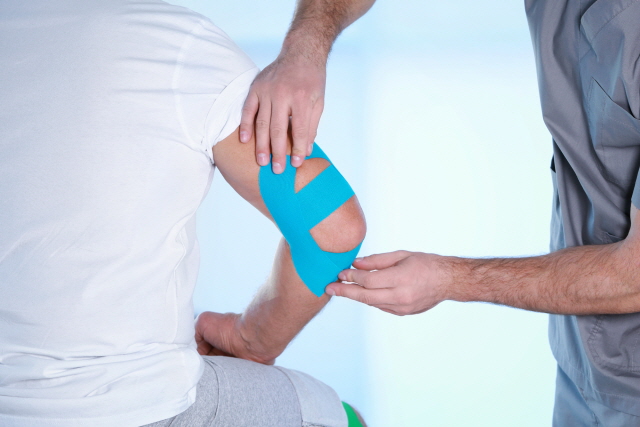
Applying a sport-taping therapy to support the patient’s elbow
By Winston Lee L.Ac, Ph.D., KMD
Tennis, a game loved by many, sometimes comes with a few aches and pains — hello, tennis elbow! But don’t let that put you off. We’ve got an exciting tale of how this ancient practice called acupuncture can come to the rescue.
Lateral epicondylitis is commonly known as tennis elbow. As medical professionals, our collective goal is to continuously optimize our skills and approach to bring patients the highest level of care. Tennis elbow, a repetitive stress injury affecting nearly 3% of the population, frequently challenges practitioners due to its stubborn nature and tendency towards chronicity in general.
Causes of Tennis elbow vary from improper backhand stroke, weak shoulder and wrist muscles, using a tennis racket that is too tightly strung or too short, frequently hitting the ball off center on the racket, or hitting heavy, wet balls. For non-tennis players still suffer from the symptom. For example,
one who is Painting with a brush or roller, operating a chain saw, frequently use of other hand tools, using repeated hand motions in various professions, such as meat cutters, musicians, dentists, and carpenters
Also known as ‘tennis elbow,’ lateral epicondylitis is an inflammation of the tendons that join your forearm muscles to your elbow’s outside bone. It’s typically the result of overuse, especially in repetitive activities. You’ll know you’ve got it when your elbow aches and burns, and the pain can extend to your forearm and wrist. The common fix includes rest, pain relievers, and physiotherapy. Some cases even require surgery. However, more folks are now turning to an old remedy in a new setting — acupuncture. It’s all about needles and nerve points and getting thumbs-up from many who’ve tried it.
In dry needling, we focus on trigger points-knots of muscle that are hyperirritable and often cause pain beyond their immediate area. They’re common in tennis elbow sufferers, making this method promising. But what is it? Unlike traditional acupuncture, where needles are applied to specific energy meridians, dry needling directly targets these troublesome trigger points.
The procedure involves a thin filiform needle penetrating the skin and stimulating underlying myofascial trigger points, muscles, and connective tissues. The needle helps release the knots and relieve muscle pain and stiffness. A little bit of discomfort is normal, but that’s usually a good sign that we’re in the right spot.
After done with acupuncture treatment, I strongly recommend applying sports taping to the elbow. Make sure the patient’s arm is fully straightened. Apply an anchor strip of rigid tape around the forearm, just below this sore spot. Next, apply another strip starting from the anchor, running diagonally upwards across the elbow and finishing on the inside of the upper arm. This strip should cross the sore spot. Repeat these two to three times, each new strip slightly overlapping the previous one. Now, secure everything with another anchor around the upper arm. The key here is to ensure no wrinkling or creasing in the tape; that could irritate the skin. The last touch. A strip of flexible tape around the forearm anchor. It allows the muscles to move but still gives support.
































